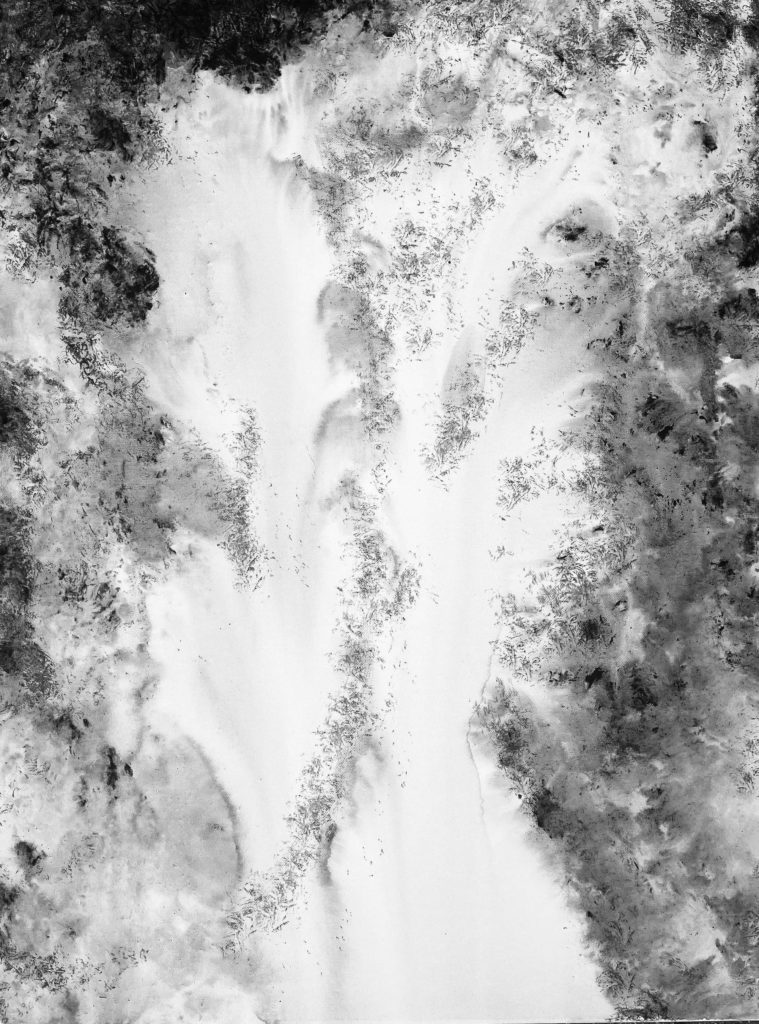

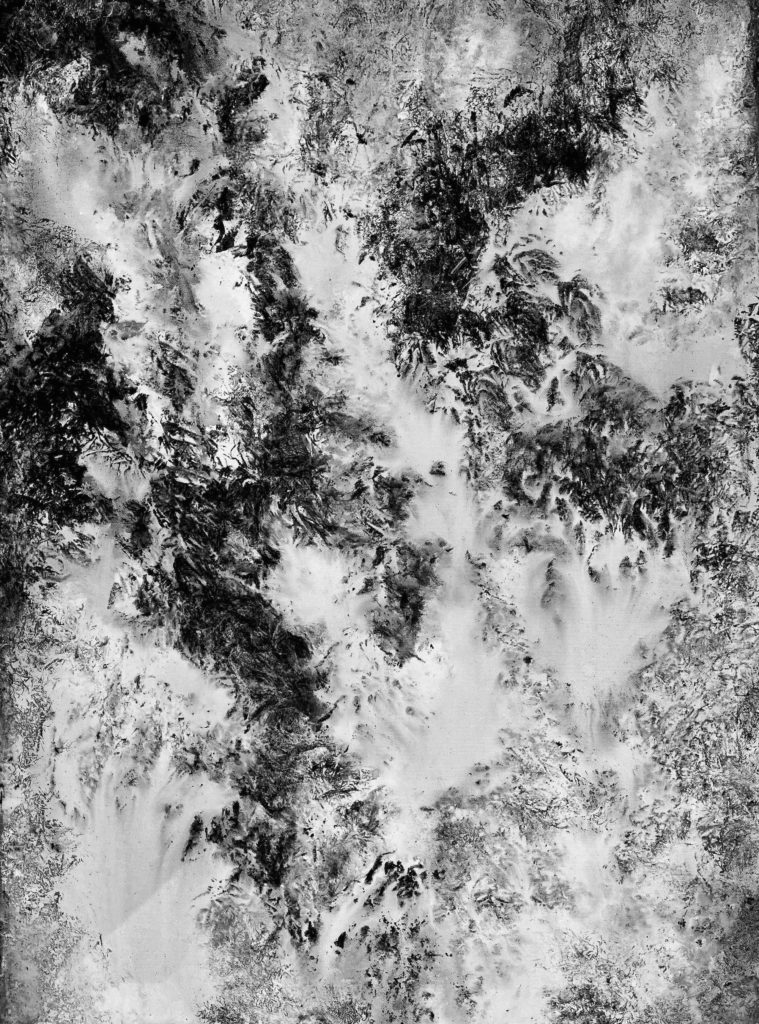
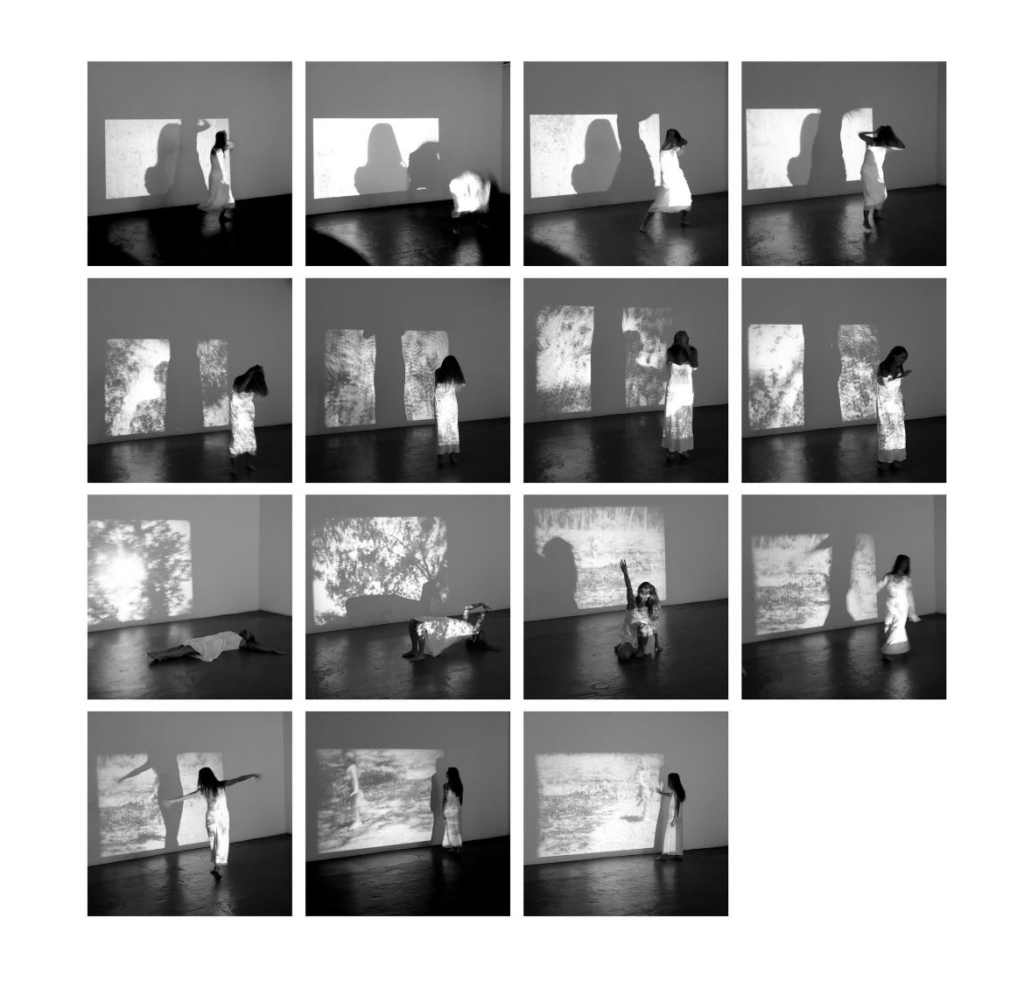
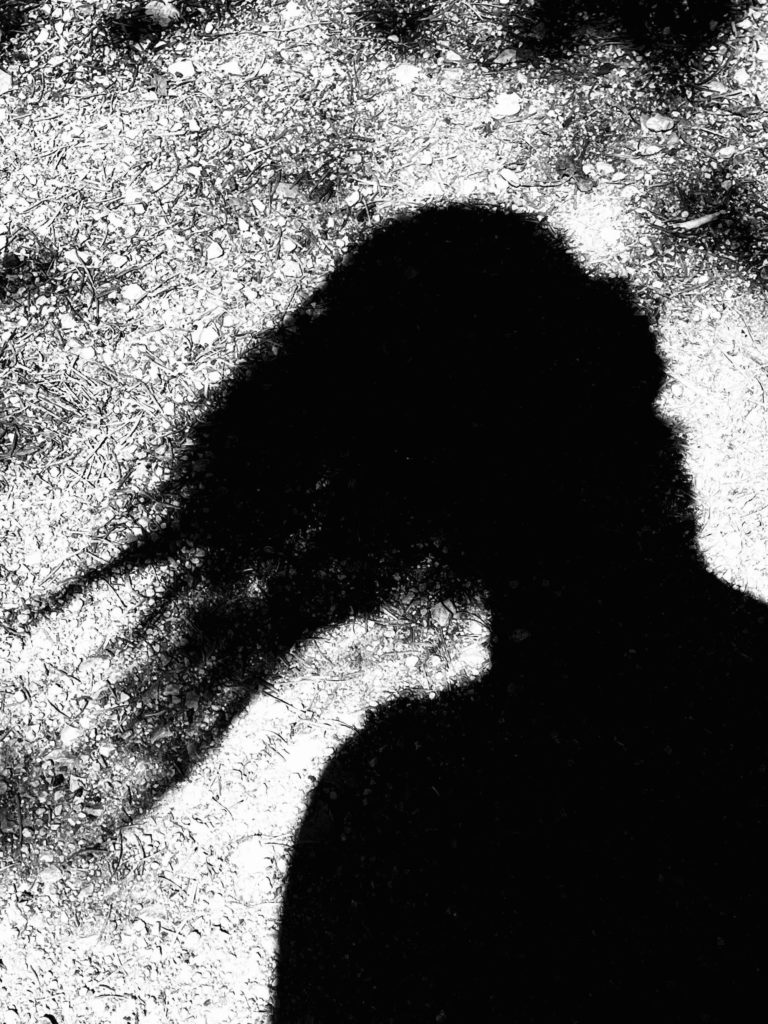



Exhibition views

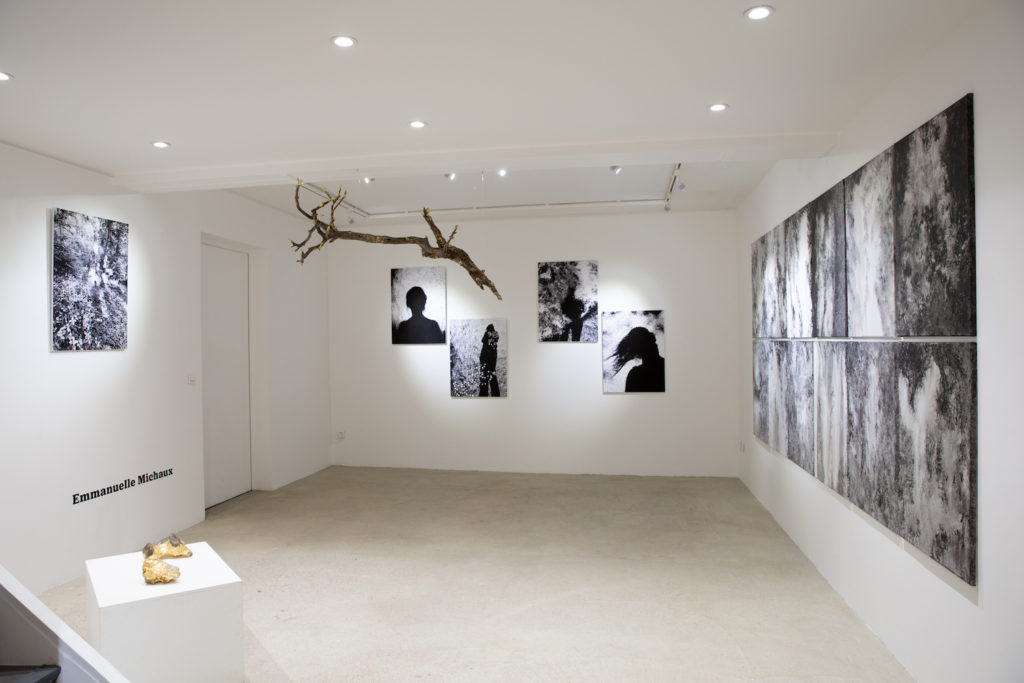
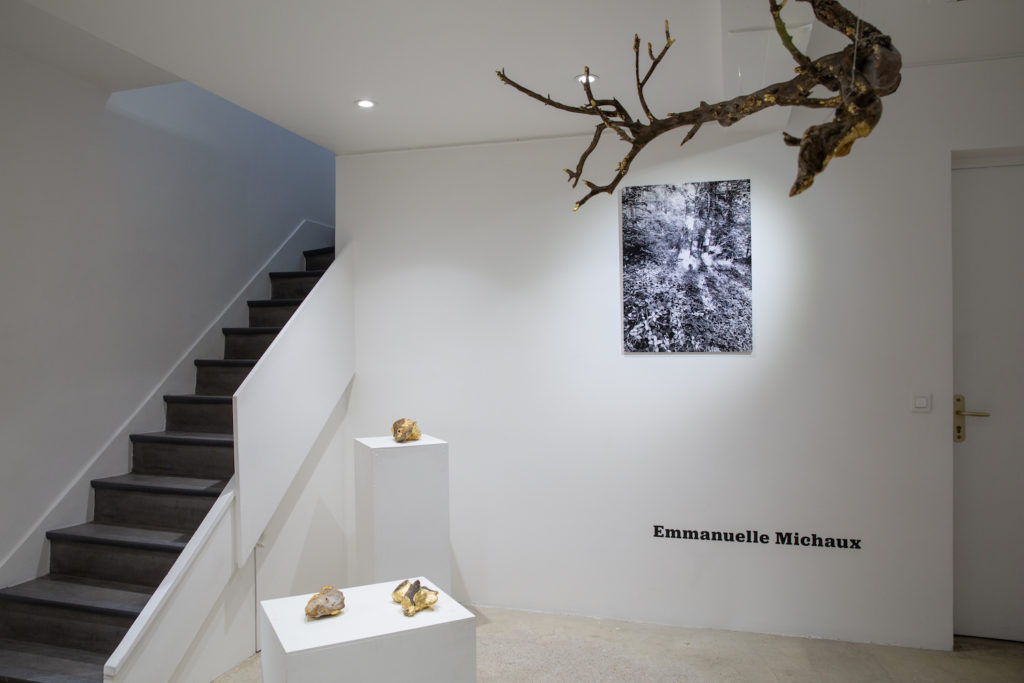
I Seek Only to Pass Through
2025
Paintings, Photographs, Video and Performance
« Je sentais parfois que ce n’était pas moi qui regardais les arbres, mais qu’eux me regardaient, qu’ils avaient quelque chose à me dire. »
Paul Klee, Journal (1898–1918)
In this exhibition—conceived as a visual, sensory, and reflective trajectory—Emmanuelle Michaux explores our relationship to the world through a constellation of images and materials gathered in the forest where she has lived alone for the past year. Shadow-based photographs, black-and-white abstract paintings, natural fragments touched with gold leaf, and a memory-driven video composed of personal archives and intimate landscapes form the foundation of the work.
The exhibition’s title, I Seek Only to Pass Through, borrowed from Montaigne, articulates its core gesture: to be present, to move rather than settle, to make passage itself the very condition of aesthetic experience.
A Poetics of Withdrawal
Over the past several years, Michaux has developed a practice at the intersection of image-making, painterly gesture, and installation. Her work engages themes of memory, childhood, and disappearance—yet always obliquely. She privileges clues, fragments, shadows. The artist’s body, consistently present yet never frontal, appears through subtraction: a silhouette cast onto a trunk, a hand caught in light, a muted voice in a silent film.
This formal stance aligns the work with traditions that decenter the subject—echoing Georges Didi-Huberman’s notion of survivance and Tim Ingold’s concept of the “life-line.”
Working against an art of assertion, Michaux operates from the margins: in shadow, at thresholds—those of the forest, of memory, of the passing instant. Her aim is less to produce images than to allow a world to surface, or more precisely, to open up its interstices.
The Void as Generative Field
The conceptual grounding of this body of work draws on non-Western understandings of space. Here, the void is not absence or lack but potential—breath, interval, resonance. Informed by Taoist philosophy, the dynamic between Void and Fullness, Yin and Yang, shapes the internal logic of the works.
Rather than reproducing Cartesian dualisms, Michaux investigates interdependence—between body and environment, memory and disappearance.
In this framework, the Void is what enables the world to appear. Without void, no breath. Without silence, no voice. Without loss, no trace.
An Aesthetics of Attention
Michaux’s practice can be understood within an aesthetics of perception, in a phenomenological lineage that includes Merleau-Ponty and Jean-Louis Chrétien: to paint, photograph, or film is to enter a relation with the world through the body—not as a dominating subject but as sentinel, as receptive surface.
Seeing becomes less an act of conquest than a mode of attunement.
This approach recalls Cézanne’s intuition (“the landscape thinks itself within me”), Klee’s sensitivity to the living world, and aspects of prehistoric art, where images act less as representations than as spiritual continuities. Michaux seeks not to depict a landscape but to inhabit its vibration, to translate the world’s quiet density. Her stance embraces a poetic form of dispossession.
“All beauty contains something inhuman,” writes Camus.
“What we do not understand is what is beautiful,” answers Claudel.
Here, art becomes attention. The tree is no longer backdrop but interlocutor. The body no longer subject but passage.
Installation as a Temporal Experience
At the center of the exhibition, a video acts as a living core. Composed from personal archives—home movies, childhood images, a teenage dance to the song Ma vie—it functions as a time capsule. It is not a narrative but a condensation, a cycle, moving from birth to disappearance.
Images unfold like non-linear recollections, interwoven with motifs from the natural world—sea, forest, light—in a visual meditation on passage, metamorphosis, and trace.
By linking personal fragments with universal forms, the work steps beyond autobiography and reconnects with an archaic gesture: to dance, to paint, to gather, to place. This is where an ethics of attention emerges: being with the world without seeking to control or shape it.
Performance: A Body Crossed by Images
In dialogue with the video, Michaux presents a performance that extends and displaces the installation. In an unadorned space, her body—at times still, at times in motion—passes through the projected images and allows them to pass through her.
Shadows, flickers, tree silhouettes, and archival pulses settle on her skin, enveloping her, fragmenting her, dissolving her.
The performance does not illustrate; it listens.
The body becomes a porous screen, a sensitive membrane where past and present, the intimate and the external, light and erasure meet.
As the artist moves, images fracture and recompose themselves. A minimal choreography emerges—micro-gestures, suspended moments, slow turns—as if the body were less dancing than tuning itself to the world’s vibration.
This silent ritual positions the viewer as witness to a crossing: a body through an image, an image through a body. A reminder that seeing is always relational—a meeting of presences that transform one another.
An Attention to the Trembling
Ultimately, the exhibition proposes a shift in posture: from the artist as enunciator to the artist as medium; from artwork as message to artwork as presence; from image as capture to image as interval.
It invites attention to what trembles, to the ephemeral, to what pulses beneath the surface, to what cannot be spoken but can be felt.
In a time saturated by speed, control, and visibility, I Seek Only to Pass Through offers a gesture of restraint—a form of soft resistance, a spirituality without doctrine, an attempt to return to what childhood once knew: that seeing is an act of care,
that the world is both distant and close, and that beauty often arises from the simple act of being here.

